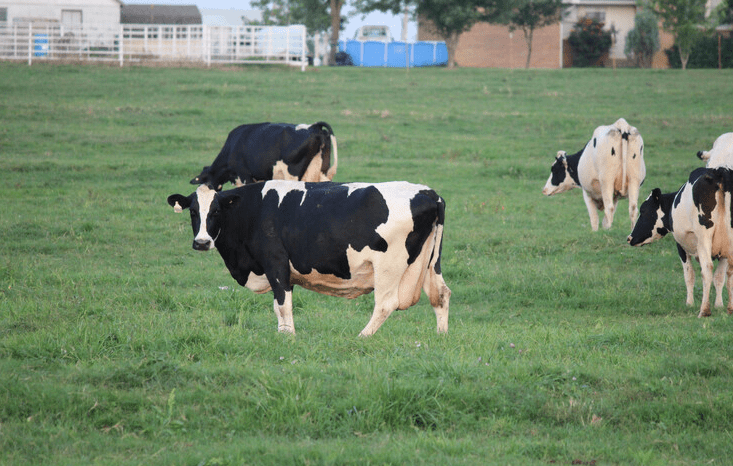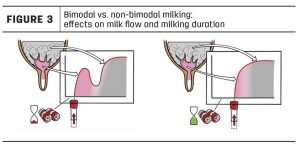

From State fiscal year 2010 to 2019, the State Auditor’s Office estimates that Vermont taxpayers spent more than $285 million on programs and policies to support the dairy industry and/or address adverse environmental impacts caused by some dairy practices. In fiscal year 2019, the most recent year of the analysis, spending totaled more than $35 million.
“Every Vermonter knows the important historical contribution dairy farming has made to our state’s economy and identity,” said Auditor Hoffer. “We also know the last few decades have been extremely challenging for small- and mid-sized dairy farms. Below-cost payments from milk processors, industry consolidation, water quality requirements – these and other pressures help explain why Vermont went from 4017 farms in 1969 to fewer than 650 today.
“As the state’s accountability office, my team and I engaged in this analysis to provide a comprehensive look at how taxpayer funds are being used to support the dairy industry and increasingly, to address the environmental impacts of dairy farming. We hope that this report will serve as a baseline for State government leaders and the public as they consider the future of Vermont’s dairy industry and what role public funds should play.”
The report describes and quantifies all State-funded programs that offer direct benefits to dairy farmers (Part I), and/or mitigate the environmental impacts of some dairy farming practices (Part II). The largest financial benefits to dairy farmers come from tax policies and benefits, specifically, exemptions to the Sales Tax and reductions in Property Taxes through the Current Use Program. While spread across many programs, grants related to dairy’s environmental impacts are also sizable and have grown in recent years, particularly with the implementation of Vermont’s Clean Water Initiative.
Hoffer added: “The Legislature and the Executive branches each recognize the challenges facing Vermont dairy, and have initiated a series of efforts to re-imagine the future of Vermont dairy. As they consider the state’s role in that future, it’s critical for them, and for the public, to know how much taxpayers expend today to support the industry. My office completed this important work to the create an accountable role for the state moving forward.”

All sales from Vermont dairy farms, including milk, cattle, and crops, accounted for 74% of Vermont’s total agricultural sales in 2017. Woodland was not included in the analysis of Vermont’s farmland.
In the 2019 Vermont Rural Life Survey conducted by Vermont PBS and Vermont Public Radio, 93% of respondents said that the dairy industry was very or somewhat important to Vermont’s sense of self.

The auditor’s report included data on two agriculture-related financial benefits:
Current Use
The Current Use Program, which was established in 1978, allows the “valuation and taxation of farm and forest land based on its remaining in agricultural or forest use instead of its value in the marketplace.”42 In other words, Current Use reduces the taxable value of the property, and a lien is placed on the land to discourage future development.xvi In addition, eligible farm buildings enrolled in Current Use are not subject to the property tax.42 In 2019, 2.5 million acres were enrolled in the program, approximately 42% of Vermont’s land.
Using dairy farm addresses provided by the Agency of Agriculture, we identified between 229,000 to 282,000 acres of land operated by dairy farms that were enrolled in Current Use in 2019.xvii Lowering the property taxes for these parcels shifts the tax burden to other taxpayers and funding sources to make up revenue for the State’s Education Fund. The State also draws on the General Fund to reimburse municipalities through a “Hold Harmless” payment to make up for reductions in local property tax revenue.
We estimate that dairy farmers enrolled in Current Use received between $71.3 million to $83.5 million in tax benefits from 2010 to 2019.
In addition, we estimate that dairy-related program administration at the Department of Taxes cost $741,000 from FY10 to FY19.
VHCB’s Farmland Conservation Program
VHCB’s Farmland Conservation Program focuses on retaining the state’s quality agricultural soils and land by establishing permanent conservation easements. VHCB uses State funding from the Property Transfer Tax and the Capital Fund (matched by Federal funding from the Natural Resources Conservation Service) to purchase development rights on farms to permanently prevent non-agricultural development.
Since 1987, 166,400 acres of agricultural land on over 761 farms have been conserved with VHCB funding. The proceeds from the sale of the development rights go to the farm owner, and in almost half of the projects, assist in the transfer of land.
Similar to the Current Use Program, the primary purpose of this program is to conserve land and soil. In doing so, it provides financial benefits to dairy farmers using State funds.
From FY10 to FY19, VHCB conserved 121 dairy farmsxviii in Vermont, totaling 17,290 acres of farmland. To purchase these development rights, VHCB used $14.4 million of State funding from FY10 to FY19.
VHCB estimates that the program administration costs associated with conserving these dairy farms totaled $3.3 million of State funds, bringing the total State spending on dairy farm conservation to $17.7 million from FY10 to FY19. Program administration costs include staff salaries and benefits, direct costs (such as travel costs, appraisal costs, and surveys), as well as payments to partner organizations, such as the Vermont Land Trust, that work directly with farmers interested in conserving their land.

There are also environmental mitigation programs of over $30 million since 2010 and over $7 million in 2019 alone, including:
The Water Quality Division at the Agency of Agriculture
The Water Quality Division is responsible for administering the Vermont Agricultural Non-point Source Pollution Control program, which includes technical and financial assistance, education and outreach to the agricultural community, and farm inspections and enforcement activities. While these programs are not specific to dairy farming, dairy farms make up a significant portion of the Division’s portfolio. Funding for these programs comes from the Capital Fund, the Clean Water Fund, and the General Fund.
The largest program within the Water Quality Division is the Best Management Practices (BMP) program, which provides technical and financial assistance for on-farm improvements and structural conservation practices to improve water quality. BMP is primarily funded through the Capital Fund. Examples of BMP conservation projects include manure storage, barnyard runoff collection, and milk house waste collection and treatment.

Conclusion
From FY10 to FY19, Vermont’s dairy industry received at least $285 million from State policies and programs designed to both support dairy farmers and mitigate the environmental impacts of dairy farming practices. The largest financial benefits to dairy farmers came from tax policies and benefits, specifically exemptions to the Sales Tax and reductions in Property Taxes through Current Use, which lowered the cost of production for farmers. While spread across many programs, grants related to mitigating the environmental impact of dairy farming are also sizable and have grown in recent years, particularly with the implementation of Vermont’s Clean Water Initiative. This report is intended to serve as a resource for State policymakers, program managers, and the public as they consider the future of dairy in Vermont and what role public funds should play.

About Investigative Reports: This investigative report is intended to inform citizens and State government leaders. It is not an audit and is not conducted under generally accepted government auditing standards. Therefore, its conclusions are more limited, and it does not contain recommendations. As the State of Vermont’s constitutional officer charged with holding state government accountable, the Auditor utilizes investigative reports to supplement the performance and financial audits regularly produced each year.

























